The ancient Egyptian pantheon is a complex and fascinating tapestry of deities, each with their unique characteristics, roles, and histories. Among them, Anubis, the jackal-headed ancient Egyptian god, holds a special place due to his significant role in death rituals and the afterlife.
The evolution of Anubis from being recognized as the son of Ra, the sun god, to becoming the Egyptian god of funerary rites, protector of graves and guide to the underworld, provides a captivating insight into the ever-evolving religious and cultural beliefs of ancient Egypt.

Eternal Space, CC BY-SA 4.0, via Wikimedia Commons
The Origins of Anubis – A Deep Dive into His Celestial Lineage
The enigmatic jackal-headed god of ancient Egypt, Anubis, has a profound and intricate origin story, deeply rooted in the celestial tapestry of the early dynastic period.
The complexity of his lineage, intertwined with the sun god Ra and divine cow Hesat, paints a vivid picture of his initial role and significance in the ancient Egyptian pantheon.
Early Dynastic Period – The Birth of Anubis
In the dawn of ancient Egyptian civilization, during the early dynastic period, Anubis was recognized as the offspring of Ra and Hesat.
This was a time when gods were largely associated with natural phenomena, and their roles were reflective of the forces they embodied.
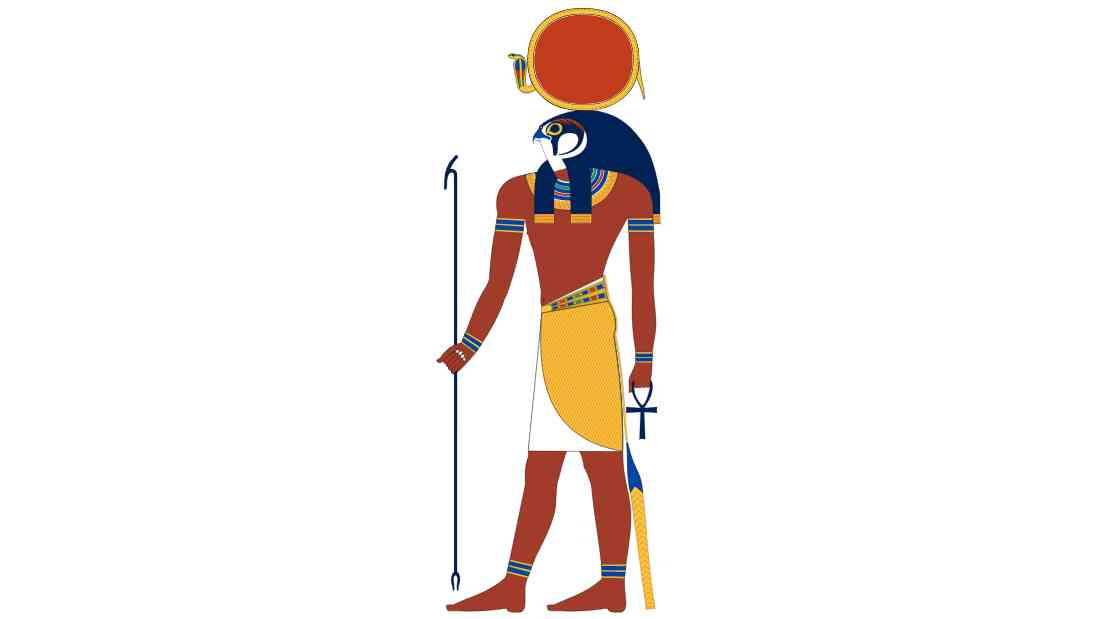
Jeff Dahl, CC BY-SA 4.0, via Wikimedia Commons
Ra, the sun god, was one of the most venerated deities in ancient Egypt. He symbolized light, warmth, and growth – elements crucial to the survival and prosperity of the ancient Egyptian civilization.
As the son of Ra, Anubis inherited a portion of this celestial power, embedding him with a divine status from the very beginning.
Hesat – The Divine Cow
Hesat was considered the earthly manifestation of Hathor and was revered as the goddess of milk, a nourishing substance symbolic of life and fertility.
The ancient Egyptians depicted her in the form of a divine cow.
As the son of Hesat, Anubis was endowed with her nurturing qualities.
This connection may have initially tied him to themes of birth and renewal, a stark contrast to the death-related duties he would later assume.

Eternal Space, CC BY-SA 4.0, via Wikimedia Commons
The Connection of Anubis to Life and the Celestial Realm
The union of these two powerful entities – Ra, embodying the life-giving sun, and Hesat, representing earthly nourishment – positioned Anubis as a deity with a strong connection to both life on Earth and the celestial realm.
From his birth, the Egyptian god Anubis was destined for greatness, carrying the legacy of his powerful parents, Ra and Hesat. This dual association likely played a significant role in shaping his early responsibilities within the divine hierarchy.
Anubis’s unique lineage, therefore, provided him with a diverse set of attributes.
His connection to Ra gave him a celestial, almost untouchable quality, while Hesat brought him closer to the people, linking him with the sustenance and nurturing that were fundamental to their everyday lives.
However, as we will see, the journey of Anubis was not fixed. His role and symbolism would undergo significant transformations, mirroring the evolving beliefs and cultural shifts within the ancient Egyptian society.
The Transition of Anubis – From Celestial Deity to Guide of the Dead
The journey of Anubis from a deity associated with life and celestial phenomena to the Guide of the Dead is a captivating tale of transformation.
It reflects the dynamic nature of ancient Egyptian religious beliefs and their response to societal changes and evolving understandings of life, death, and the afterlife.
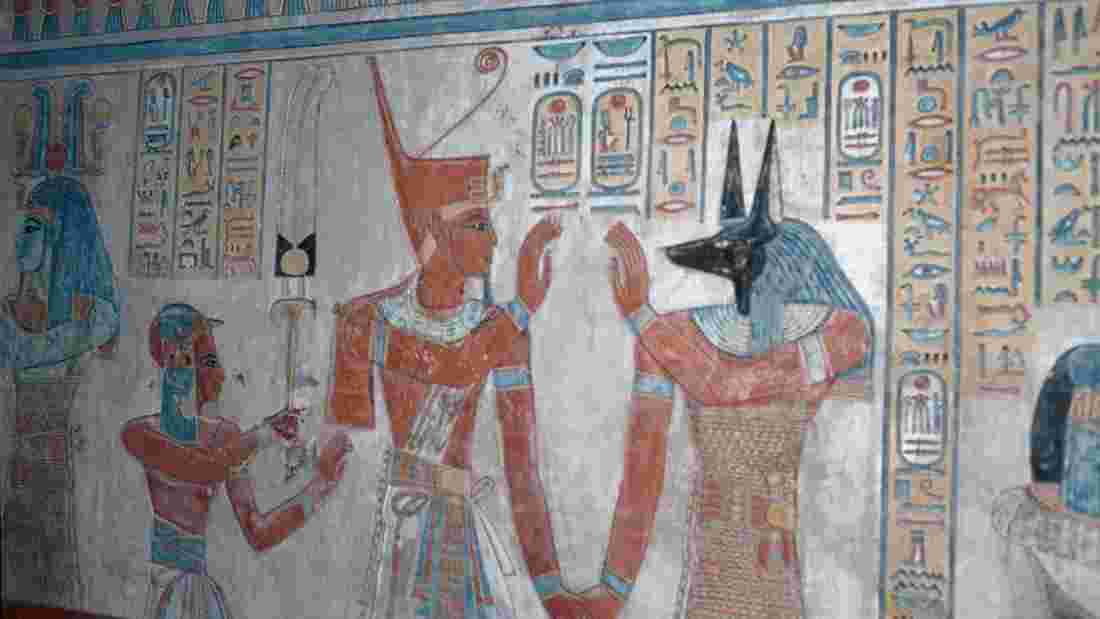
The Early Roles of Anubis
In his earliest depictions, Anubis was positioned within the pantheon of Egyptian gods as the son of Ra and Hesat, symbolizing his connection with both the celestial and earthly realms.
His association with Ra, the sun god, suggested a role tied to light, growth, and rejuvenation.
Meanwhile, his lineage from Hesat, the divine cow, linked him with fertility and nourishment.
These roles positioned Anubis as a deity of life and vitality, a far cry from the somber duties he would later assume.
Shift in Parentage and Responsibilities
The Old Kingdom saw a shift in Anubis’s parentage. He started being referred to as the son of Osiris, the god of the dead, and Nephthys, the goddess of mourning and night.
This change coincided with Anubis’s evolving role – from being a celestial figure to becoming a god closely associated with death, mummification, and the afterlife.
Anubis became the protector of graves and the guide for souls in their journey to the afterlife. He was also believed to supervise the embalming of bodies and the “Weighing of the Heart” ceremony, which determined whether a soul would be allowed to enter the realm of the dead.

By the Middle Kingdom, Anubis had solidified his role as the Protector of the Dead.
His responsibilities expanded to include not just overseeing the embalming process but ensuring the deceased received proper rites and guiding their spirits into the afterlife.
His role as a psychopomp, a guide of souls, was central to Egyptian funerary practices.
Anubis and the Mummification Process
The evolution of Anubis from a deity associated with life and celestial phenomena to a god in charge of protecting and guiding the dead resulted in him being strongly linked to the mummification process.
This intricate ritual, central to ancient Egyptian beliefs about the afterlife, played a pivotal role in cementing Anubis’s status as the guardian of the dead.
The Importance of Mummification in Ancient Egypt
For the ancient Egyptians, the preservation of the body through mummification was more than just a funerary practice. It was a sacred rite that ensured the soul’s survival in the afterlife.
They believed that the physical body would serve as a home for the soul or ‘ka’ in the afterlife. Thus, keeping the body intact was critical to the deceased’s continued existence in the next world.
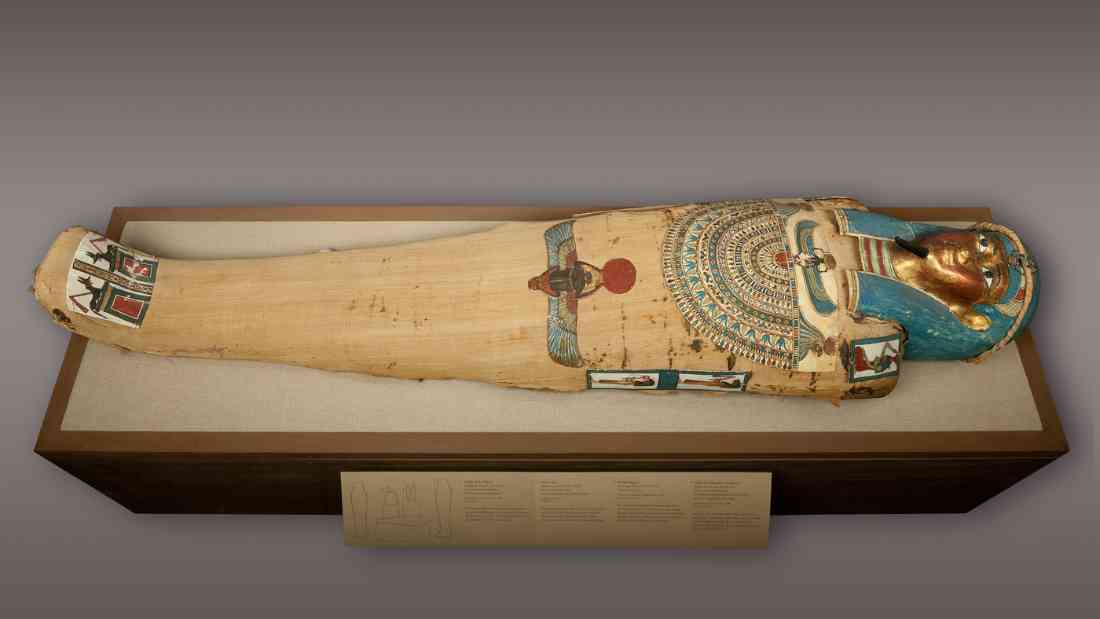
Anubis – The God of Embalming
It was in this context that Anubis emerged as the God of Embalming.
With his jackal-headed form – a nod to the scavengers seen around burial sites – Anubis was a fitting figure to preside over the mummification process.
He was believed to watch over the embalmers, guiding their hands in the delicate task of preserving the body for its journey to the afterlife.
Anubis’s role in this ritual went beyond mere supervision. In the mythic narrative, he was the one who embalmed Osiris’s body, making him the first mummy.
By performing this sacred duty, Anubis set the precedent for the mummification process, thereby etching his importance in the minds of the ancient Egyptians.
Anubis in the Mummification Rituals
During the mummification process, priests wearing masks of Anubis would perform the rituals, further emphasizing his critical role.
The ‘Opening of the Mouth’ ceremony, a crucial part of the mummification process, was also conducted under Anubis’s jurisdiction. This ritual was believed to restore the senses of the deceased, enabling them to eat, drink, and speak in the afterlife.
The preservation of vital organs also held a significant place in the ritual, and the liver was considered one of the most important.
The liver, along with the lungs, stomach, and intestines, was removed from the deceased’s body during the process of mummification. Instead of being discarded, these organs were carefully preserved and stored in special containers known as canopic jars.
Each of these jars was associated with a specific deity known as a “Four Sons of Horus” and was designed to provide protection in the afterlife.
The liver was stored in a jar featuring the head of Anubis. This Anubis-headed jar is known as the Imsety jar.
The use of an Anubis-headed canopic jar for the liver underscores the significant role that Anubis played in the protection of the dead. It was believed that by placing the liver in the care of Anubis, the deceased would gain his guidance and safeguarding on their journey through the afterlife.
Moreover, amulets bearing the likeness of Anubis were often placed among the wrappings of the mummy. This was done to invoke his protection over the deceased during their journey through the underworld.
Anubis and the Weighing of the Heart Ceremony – A Divine Judge in the Afterlife
One of the most significant roles that Anubis assumed was presiding over the “Weighing of the Heart” ceremony.
This crucial judgment event, a cornerstone of ancient Egyptian beliefs about the afterlife, marked the culmination of Anubis’s transformation into the God of the Dead.
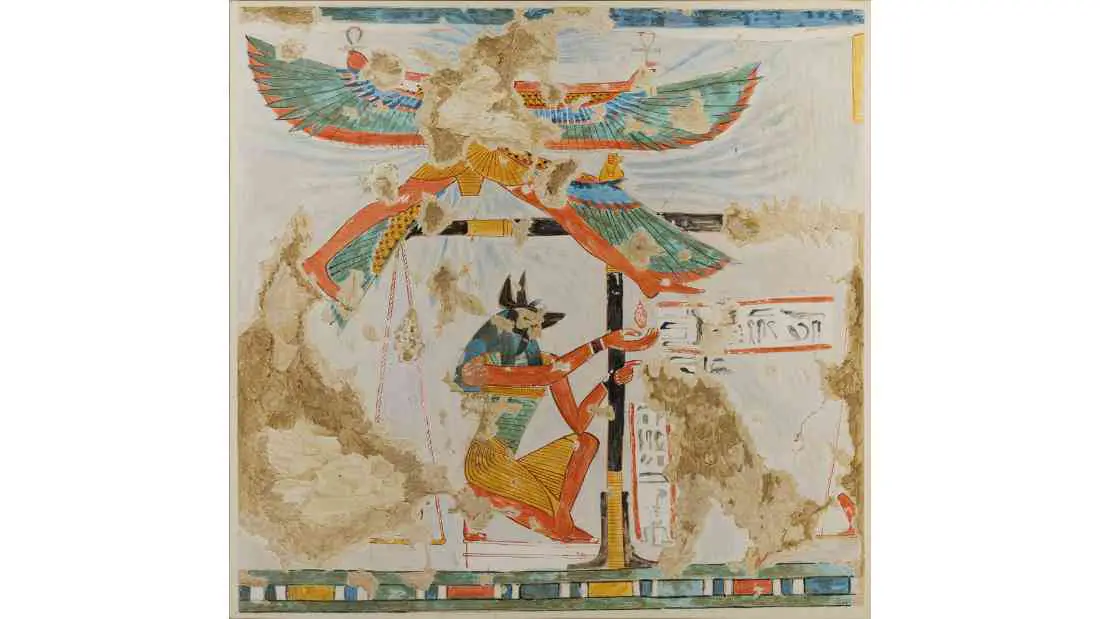
Nina M. Davies, CC0, via Wikimedia Commons
The Weighing of the Heart Ceremony – A Test for the Afterlife
In the intricate belief system of the ancient Egyptians, the journey to the afterlife was not a straightforward one.
The deceased had to pass through a series of tests, the most important of which was the “Weighing of the Heart” ceremony.
In this pivotal event, the heart of the deceased – considered the seat of emotion, thought, will, and intention – was weighed against the feather of Ma’at, the goddess of truth, balance, and cosmic order.
This was not merely a test of the dead’s deeds in life but also a judgment of their inner moral character.

IGallic, CC BY-SA 4.0, via Wikimedia Commons
Anubis – The Divine Overseer
As the overseer of this ceremony, the Egyptian god Anubis played a critical role.
He was the guardian of the scales, entrusted with the task of ensuring the accurate weighing of the heart.
This responsibility carried immense significance as the result of the weighing could consign the soul to oblivion or grant it passage to eternal bliss in the afterlife.
In many depictions of this ceremony, Anubis is shown attentively adjusting the scales, confirming the weight of the heart.
His role as the divine overseer underscored his impartiality and commitment to cosmic order, further enhancing his reputation as a fair and just deity.
The Consequences of the Weighing
The outcome of the “Weighing of the Heart” ceremony under Anubis’s watchful eyes was of utmost importance to the deceased.
If the heart was lighter than the feather, indicating a life well-lived in accordance with Ma’at’s principles, the soul would be granted entry into the Field of Reeds, the heavenly paradise in ancient Egyptian belief.

British Museum, Public domain, via Wikimedia Commons
However, if the heart was heavier than the feather, burdened with the weight of wrongdoings, it was devoured by Ammit, the fearsome ‘devourer of the dead’, resulting in the soul’s eternal demise.
As the overseer of such a consequential judgment, Anubis’s role was both revered and feared. His position as the presider over the “Weighing of the Heart” ceremony firmly cemented his high status in the pantheon of ancient Egyptian gods .
His role in this critical juncture of the soul’s journey to the afterlife underscores the evolving nature of Anubis’s image in ancient Egyptian mythology.
From a deity associated with life and celestial phenomena, Anubis transformed into a divine judge in the afterlife, reflecting the dynamic and fluid nature of ancient Egyptian religious beliefs.
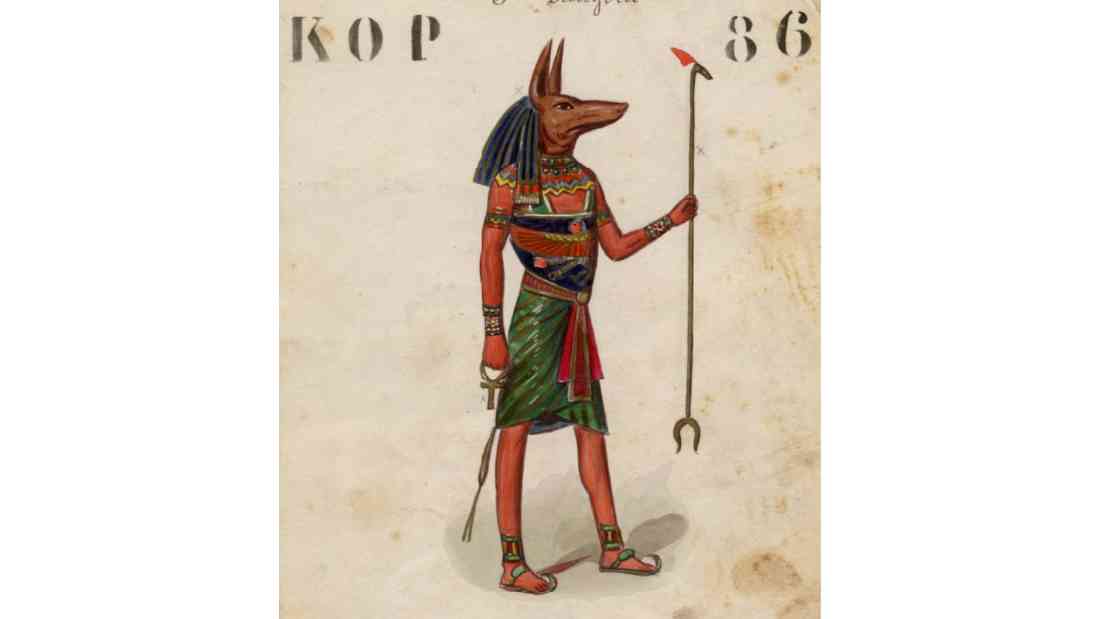
Charles Briton (d. 1884), Public domain, via Wikimedia Commons.
The Iconography of Anubis – Symbolism Behind The Jackal God
Anubis, depicted as a man with a jackal head or a full-bodied jackal, is one of the most recognizable gods in ancient Egyptian mythology.
The iconography of Anubis, the Jackal God, provides a fascinating glimpse into the symbolic language of ancient Egyptian art and religion.
The depiction of Anubis as a jackal-headed man or a full-bodied jackal served not only as a visual representation of the god but also as a symbolic expression of his roles and attributes.
This intricate symbolism underscores the nuanced and multifaceted nature of ancient Egyptian religious beliefs, where every element held profound meaning and significance.
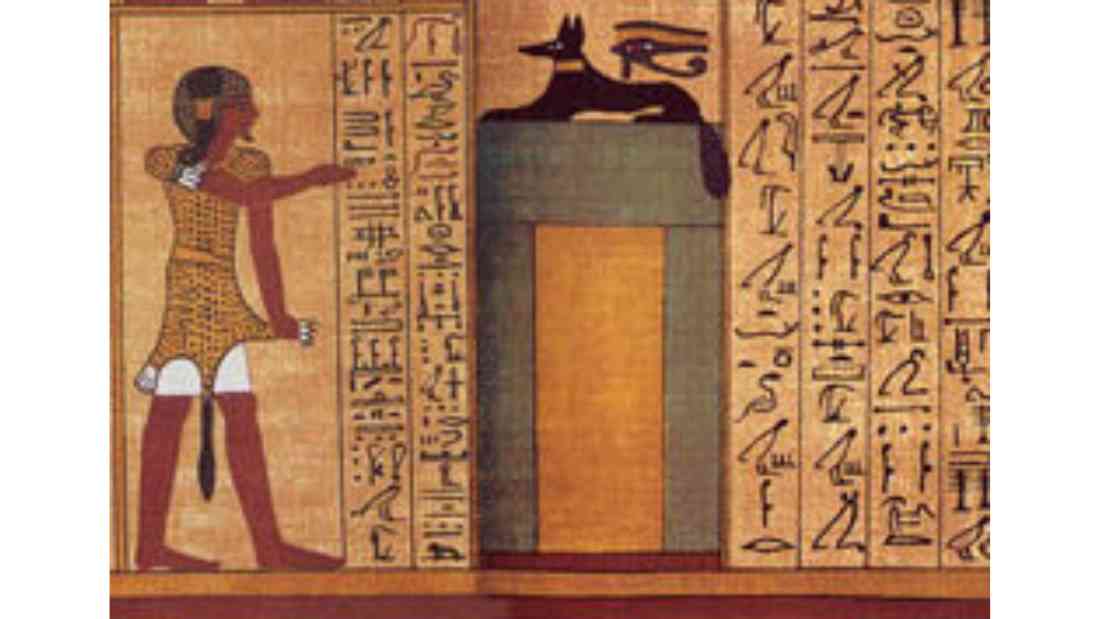
Soutekh67, CC BY-SA 3.0, via Wikimedia Commons
The Fusion of Human and Animal Forms
The peculiar blend of human and animal forms seen in the depiction of Anubis was a common practice in ancient Egyptian art.
This fusion served to communicate the divine nature of their deities, blending the physical attributes of animals with the intellectual capacities of humans.
It allowed the Egyptians to convey complex concepts about their gods, attributing them with characteristics associated with specific animals.
The Significance of the Jackal
The choice of the jackal for Anubis was far from arbitrary.
Jackals were a common sight in the deserts surrounding ancient Egyptian settlements.
Known for their cunning and adaptability, jackals often lurked around graveyards, feeding off the remains left by other predators.

Their frequent presence near burial sites led to their association with death and the afterlife.
This inherent association made the jackal an apt symbol for Anubis.
As the guardian of graves and guide to the afterlife, the jackal’s traits perfectly mirrored the roles Anubis assumed.
The jackal’s keen sense of smell and ability to navigate the desert mirrored Anubis’s role as a guide for souls navigating their way through the underworld.
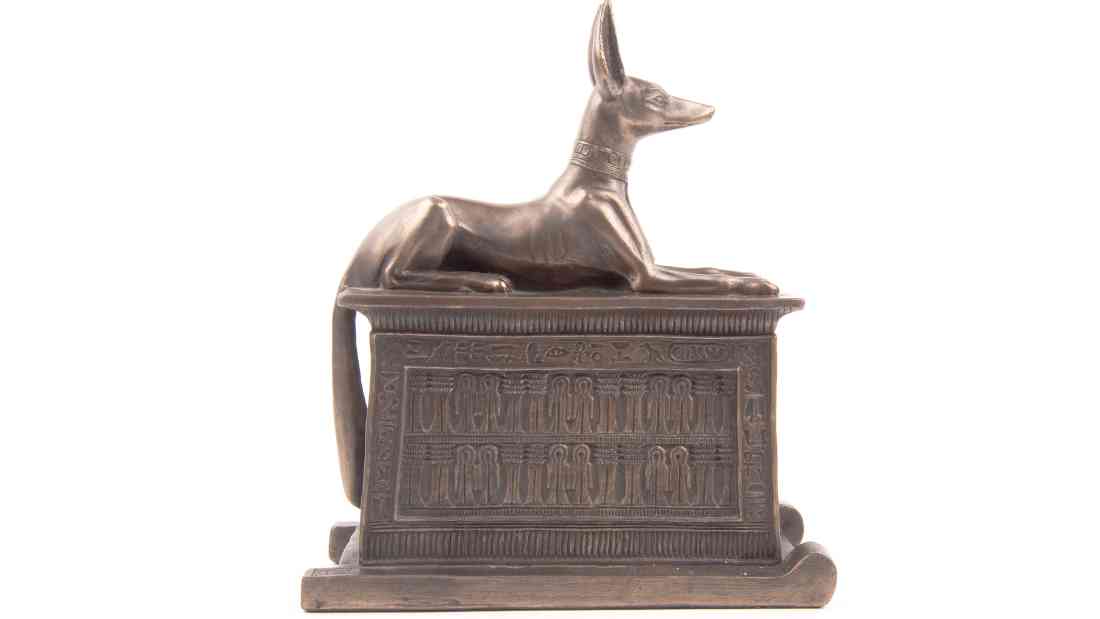
Anubis – The Black Jackal
In many depictions, the Egyptian god Anubis is portrayed as a black jackal, adding another layer of symbolism to his iconography.
Black was a color of both death and fertility in ancient Egypt, linked to the rich, dark soil of the Nile floodplain that allowed for agriculture.
This dual association with death and regeneration further emphasized Anubis’s role as a deity associated with the cycle of life, death, and rebirth.
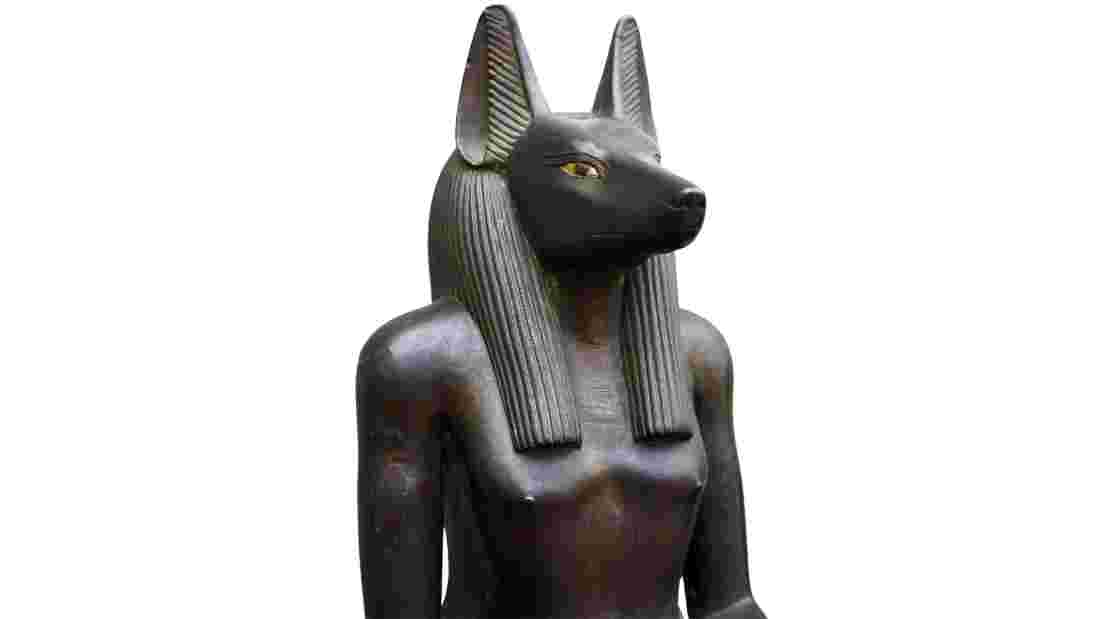
Temples Dedicated to Anubis – Sacred Spaces for the Jackal God
While Anubis was a significant figure in Egyptian mythology, there are few known temples dedicated solely to him.
This lack is likely due to Anubis’s specific role as the guardian of the dead, which made his primary places of worship tombs and burial sites rather than traditional temples.
Cynopolis – The City of the Dog
One notable exception is the city of Cynopolis, or “City of the Dog,” located in Upper Egypt. Here, a temple was dedicated to Anubis, and the city itself was known to have a large number of dogs that were considered sacred.
Anubis in Mortuary Temples
Anubis also had a significant presence in mortuary temples throughout Egypt.
These temples, built near the tombs of pharaohs and other high-ranking officials, were places where rituals were performed to honor the dead and assist them in their journey to the afterlife.
Given Anubis’s role as a guide and protector of the dead, it was common to find statues and other representations of Anubis in these temples..
An excellent example of a dedicated space for Anubis within another temple can be found in the mortuary temple of Queen Hatshepsut, located at Deir el-Bahri on the west bank of the Nile.
This intricately designed temple, nestled against towering cliffs and offering an expansive view of the river valley below, includes a chapel specifically dedicated to Anubis.
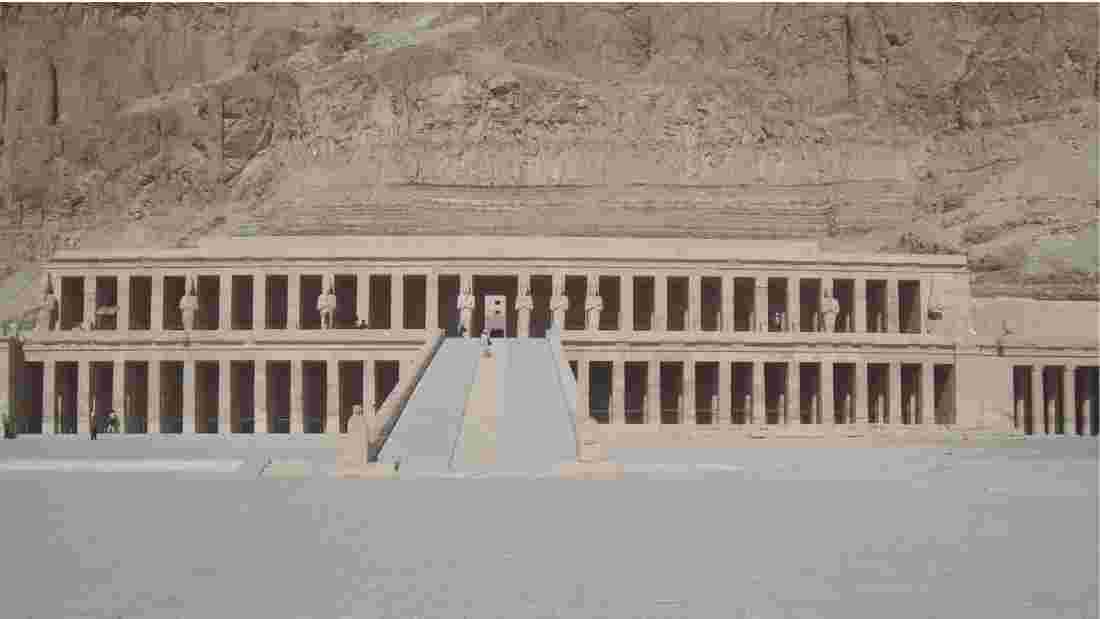
Institute for the Study of the Ancient World from New York, United States of America, CC BY 2.0, via Wikimedia Commons
This Anubis Chapel is not just an area set aside within the structure; it is a carefully crafted and significant part of the overall design.
Adorned with detailed reliefs and inscriptions, the chapel provided a sacred space where priests and worshippers could pay homage to the god of mummification and the afterlife.
One of the most important times of the year for this chapel was during the annual Beautiful Festival of the Valley.
This festival was more than just a celebration. It was an elaborate ritual that honored the dead, particularly deceased pharaohs, and sought the blessings of the gods for the living community.
During this festival, statues of gods, including Anubis, were carried in procession from the Karnak Temple across the Nile to the mortuary temples in the Valley of the Kings.
The chapel of Anubis in Hatshepsut’s temple would have been a focal point for these activities. Rituals were performed, offerings made, and prayers offered up, invoking Anubis’s protection and guidance for the spirits of the departed.
Anubis in Pyramid Texts
Though not physical temples, pyramid texts also served as sacred spaces for Anubis.
These ancient religious texts, carved into the walls of pyramids, often mention Anubis and his role in guiding and protecting the deceased. The prominence given to Anubis in these texts underscores his importance in the religious beliefs and practices of ancient Egypt.
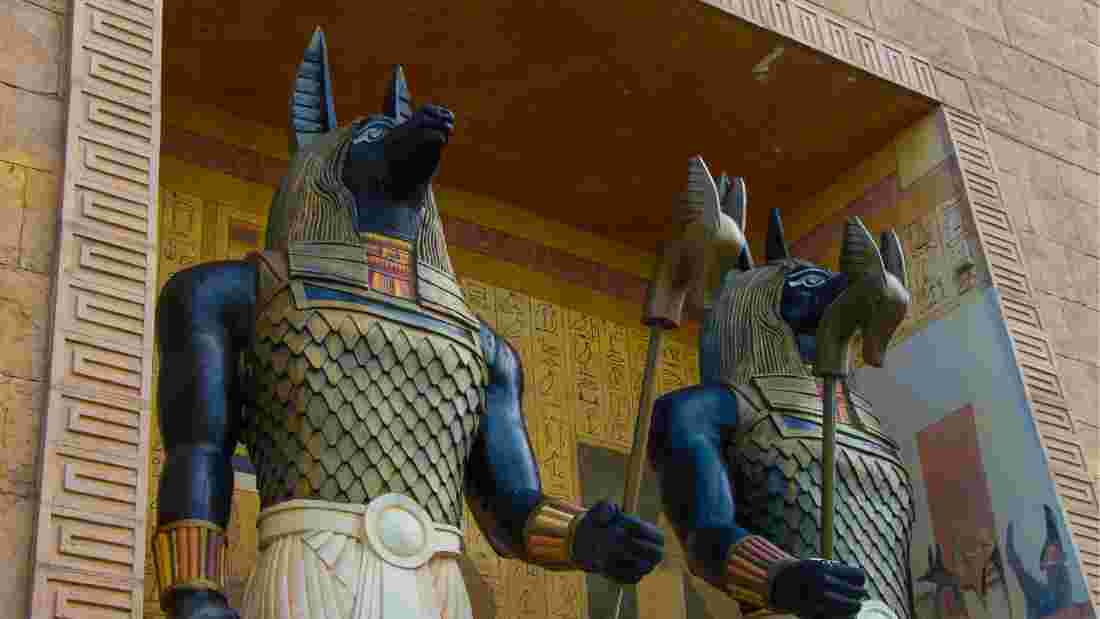
Was Anubis an Evil Deity?
Despite his associations with death and the afterlife, the ancient Egytpians did not consider Anubis an evil deity. His role in the process of death and the transition to the afterlife was that of protector and guide.
The concept of good and evil, as understood in many contemporary cultures, did not exist in the same way in ancient Egyptian belief systems. Gods were not strictly categorized as ‘good’ or ‘evil’, but were understood to possess characteristics and responsibilities that contributed to the balance of Ma’at, the cosmic order.
Anubis was revered as a protector of graves and a guide for souls navigating their way through the underworld.
He was also known to defend the deceased against evil spirits that threatened to harm them. In one myth, Anubis defeated the chaotic god Set, skinned him, and wore his skin as a warning against any who would desecrate sacred tombs.
However, popular culture has sometimes depicted Anubis as a villainous figure. This portrayal is largely due to his association with death, which is often viewed negatively in modern Western societies.
But in the context of ancient Egyptian beliefs, death was not seen as inherently evil but as a part of the natural cycle of life. Anubis’s role in this process was essential, making him a revered figure rather than a feared one.
Thus Anubis was neither good nor bad in the traditional sense. He was a powerful and respected deity who performed vital functions related to death and the afterlife.
His portrayal as ‘evil’ in some modern interpretations represents a misunderstanding of ancient Egyptian beliefs and the role of their deities.

Conclusion
The evolution of Anubis from the son of Ra to the Egyptian protector god of the Dead reflects the changing religious landscape of ancient Egypt. As their understanding of life, death, and the afterlife evolved among the Egyptians, so did the roles and responsibilities of their deities.
Anubis’s transformation is a testament to this fluidity, underscoring how gods were not static figures but rather dynamic entities that reflected societal changes and cultural shifts.
Thus the evolution of Anubis tells a story not just about a god, but about the people who worshipped him and the culture that shaped his legend.

Frequently Asked Questions About Anubis
Anubis is an ancient Egyptian god associated with mummification and the afterlife. He is often depicted as a man with the head of a jackal or as a full-bodied jackal.
Anubis was the Egyptian god and guardian of the dead and the god of embalming. He was believed to guide souls in the afterlife and oversee the weighing of the heart during the judgment of the deceased.
Anubis is usually represented as a black jackal or as a man with the head of a jackal. Black was chosen because it symbolized both rebirth and the discoloration of the corpse after embalming.
While there are few known temples dedicated solely to the Egyptian god Anubis, his worship was prominent in mortuary temples and tombs throughout Egypt. The city of Cynopolis, or “City of the Dog,” was a significant center of the cult of Anubis.
The Egyptian god Anubis was worshipped through mortuary rituals, offerings, festivals, and personal devotion in homes. During mummification, priests often wore a mask of Anubis, symbolically invoking his presence and guidance.
Yes, Anubis was often considered the son of Osiris and Nephthys. In later mythology, his role was somewhat diminished, with Osiris taking over many of his responsibilities related to the afterlife.
In ancient Egyptian burial practices, the deceased’s liver was stored in an Anubis-headed canopic jar. This practice reflects Anubis’s role in mummification and the protection of the dead.
Yes, the worship of Anubis continued well into the Roman period. He was often syncretized with the Greek god Hermes, creating the composite god Hermanubis.
Anubis is often depicted with a scale to represent his role in the judgment of the soul. In the afterlife, it was believed that he weighed the heart of the deceased against the feather of Ma’at, the goddess of truth and justice.
Anubis was not considered evil. Rather, he was seen as a protective figure who guided and protected the souls of the dead, ensuring their safe passage to the afterlife.
Posts About the Egyptian Pantheon of Gods
The Pantheon of Ancient Egyptian Gods – A Comprehensive Guide
The Wrath of Montu – The Mythology of the Egyptian War God
Egyptian God Ammit – The Eater of Hearts in Ancient Egyptian Mythology
The Nightly Journey of Khonsu – The Ancient Egyptian God of the Moon
Ihy – The Joyful Ancient Egyptian God of Music
Min – The Ancient Egyptian God of Fertility
The Egyptian God Anubis – His Evolution from Son of Ra to Protector of the Dead
Unraveling the Mysteries of Babi – The Ancient Egyptian Baboon God
Ra, the Egyptian Sun God – Symbolism and Significance in Ancient Egyptian Culture
Sobek: The Ferocious Crocodile God of Ancient Egypt
The Enigmatic Mythology of Horus, the Egyptian Sky God
The Egyptian God Set – Protector of the Desert and Lord of Conflict
The Ancient Egyptian God Medjed: The Guardian of Osiris and the Afterlife
Anput, the Wife and Female Version of Anubis
Selket – The Scorpion Crowned Egyptian Goddess
Shu – The Egyptian God of Air, Wind, Peace and Lions
Hapi the Androgynous Ancient Egyptian God of the Nile
The Egyptian Sky Goddess Nut: Myth and Symbolism
The 42 Laws of Maat: The Moral Principles of the Ancient Egyptians
The Ancient Egyptian Goddess Mut: The Maternal Power in Egyptian Mythology
The Warrior Goddess: Neith in Ancient Egyptian Mythology
The God Bes: The Joyful Dwarf Deity in Ancient Egyptian Culture
The Egyptian Gods of Love: Hathor and Isis in Ancient Egyptian Mythology
Confronting the Serpent: The God Apep, the Nemesis of Ra in Egyptian Myth

